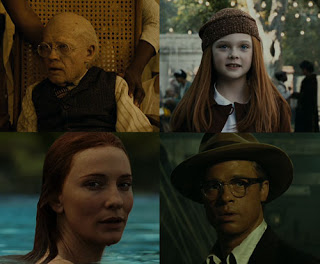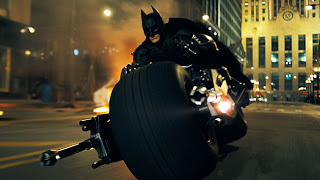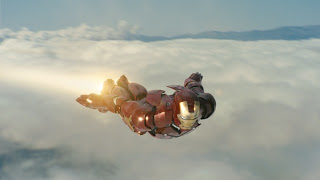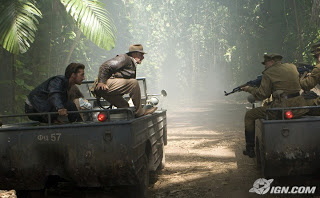To quote Steve Martin in Shopgirl, I suppose the only way to say this is to say it: I won’t be writing the Manifesto this year.
(Hold on, let me give everyone a moment to recover from the shock.)
O.K., let me clarify. Will I still write thousands of words examining this year’s Academy Awards, complete with random sports analogies and Harry Potter references? Of course I will. In fact, through the use of this fancy little blog – created for me by my friend Jamie as a specific result of last year’s Manifesto – I should be able to post commentary on a regular basis over the next few weeks. Indeed, the format will remain similar to the Manifesto of years past: For a given category, I’ll predict the winner (where I’m often wrong), declare which nominee I feel should win (where I’m always right), and highlight a few candidates that weren’t nominated but deserved consideration. So in that respect, nothing has changed.
What has changed, however, is that I’ll be writing this analysis in brief installments rather than publishing a gargantuan thesis all at once. Why? I have two primary reasons, both exceedingly selfish. The first is the more obvious: I want people to read what I write. While the majority of recipients of last year’s Manifesto expressed admiration for the end product (if also concern for my psychiatric health), few people actually, you know, read it. This I completely understand; if someone had handed me a 130-page document that only peripherally interested me, I wouldn’t have read it either. (For the record, I recognize that a small number of my readers did in fact read the entire document, and I remain sincerely appreciative to those few.)
In the past, I have maintained that I write the Manifesto for myself more than anyone, since its composition represents a two-fold opportunity for me to A) Document my thoughts on the year’s films in a centralized location, and B) Hone my craft of writing. And that’s fine. But it’s always more gratifying when my writing is read by a larger audience, and I believe the existence of this blog has granted me that opportunity for the first time. Blog posts, obviously, are more reader-friendly given their relative brevity, especially among my own ADD-riddled, Twitter-obsessed generation. Ideally my audience for this blog will expand considerably over the coming years, but even if it doesn’t I’m hopeful that my current readership will be interested in reading a segmented version of the Manifesto in which chunks of brief analysis are spread out across separate blog posts. That’s the theory, anyway.
The second reason I’m not writing a comprehensive manuscript this year is that, quite frankly, I just can’t do it anymore. Writing last year’s Manifesto – forgive me while I pay homage to The Hold Steady – almost killed me. Like, literally. During its construction – the majority of which took place over a five-day period in which I slept in two-hour shifts every 24 hours – I suffered a number of actual physiological problems, the least of which was a severely painful sore throat, the worst of which I can’t really disclose except to say that it was pretty scary. It was somewhat miraculous that I was able to complete last year’s Manifesto and come out alive, so I’d rather not push my luck.
And frankly, it makes sense because I’m going out on top (kind of like Jordan, minus the whole “comeback with the Wizards” thing). Forgive my ego masturbation, but here it is: The 2007 Oscars Manifesto will forever remain my magnum opus. It weighed in at 131 pages and comprised 71,213 words, but more so than its length, I was actually satisfied with the quality of the writing. I am confident that I will never be able to top it.
So am I quitting? It sort of feels like it, and I’d be lying if I said I weren’t a tad ashamed of myself. But I remain as passionate about movies as ever, and I’m eager to use this blog as a medium to better express myself and encourage the exchange of ideas with my audience. I’m grateful for everyone’s interest and encouragement, and I hope everyone enjoys the analysis to come.
Enough navel-gazing. Let’s talk movies. I’ll start off this year discussing one of the more intriguing technical categories: Best Visual Effects.
I railed at length about the marginalization of the visual effects category last year, so I won’t repeat myself here. Suffice it to say that nominating only three movies in the Best Visual Effects category is perhaps the most absurd ritual of the Academy, and this is an institution that practically prides itself on being absurd. The bizarre rules for Best Original Score nominations are one thing, but only three nominations for visual effects is pure lunacy – this goes right past Light Speed into Ludicrous Speed.
Anyway, here are the (three) nominated films for BEST VISUAL EFFECTS:
The Curious Case of Benjamin Button – Eric Barba; Steve Preeg; Burt Dalton; Craig Barron
The Dark Knight – Nick Davis; Chris Corbould; Timothy Webber; Paul J. Franklin
Iron Man – John Nelson; Ben Snow; Daniel Sudick; Shane Mahan
WILL WIN
This category represents a perfect litmus test for The Curious Case of Benjamin Button. David Fincher’s epic elegy was nothing if not a superlative technical achievement, and the Academy recognized it as such, doling out 13 nominations to lead the field. The movie also surprised at the box office despite its length, surpassing the $100 million mark and signifying it as the lone Best Picture nominee that also achieved significant commercial success (although Slumdog Millionaire is on its way).
But there’s commercial success, and then there’s The Dark Knight. The Batman blockbuster’s box-office prowess needs no rehashing, but the heaps of praise it earned from erudite critics remain almost astonishing. This is why the top story of last week’s nominations involved the Academy refusing (failing?) to acknowledge The Dark Knight as a Best Picture contender despite its nomination from the Producers Guild of America (among other governing bodies of cinema). Had it received a nomination for the top prize, we would have been witness to perhaps the most intriguing Best Picture race since 2000, when Ridley Scott’s wildly appealing Gladiator took down Steven Soderbergh’s thematically intricate Traffic (despite Soderbergh claiming victory for Best Director).
As it is, The Dark Knight must glumly flex its muscle in minor categories such as this. In effect, it has been reduced to the role of The Beloved Blockbuster Snub, a role first occupied in 1999 by The Matrix. That spectacular, spectacularly kickass movie was similarly shut out of all major categories, instead nominated only in technical areas (film editing, sound mixing, sound editing, and visual effects). It effortlessly swept all four, including a (questionable) victory over Star Wars: The Phantom Menace for Best Visual Effects.
Last year, a very different action picture inherited this mantle. The best-performing film at last year’s Oscars in terms of number of statuettes earned was No Country for Old Men, which won four awards, including Best Picture. But do you have any idea what performed second-best? The answer is The Bourne Ultimatum, which won Oscars for all three categories in which it was nominated (film editing, sound mixing, and sound editing). The Matrix and The Bourne Ultimatum are two very different movies, but their chief similarity is that they were both highly successful among critics as well as audiences.
The Dark Knight fits this mold snugly; it is nominated in eight categories, all of them technical with the exception of Best Supporting Actor. As such, it should be in prime position to dominate these categories – or it would be, were it not facing such a unique foe. Most Oscar heavyweights tend to gather steam as a result of their acting and screenplay, but the hallmark of The Curious Case of Benjamin Button is its craft. Despite its deliberate pace and period setting, it is essentially as much of an effects picture as The Dark Knight, with Fincher and his team employing extraordinary techniques throughout the film, most overtly in their efforts to transform Brad Pitt first into an ancient infant and then a boyish old man.
What we have in the Best Visual Effects category, then, is a curious duel between A) a classical Oscar candidate that was also commercially and technically successful, and B) a mammoth, technically-superpowered blockbuster that also proved to be a critical hit. It’s a fascinating faceoff, one infused with significance regarding more high-profile categories. If Benjamin Button emerges victorious here, it strengthens its status as an emergent challenger to Slumdog Millionaire for Best Picture. If it loses, it will undoubtedly be forgotten when the bigger prizes are awarded.
So who wins? Obviously both have their qualities (note that I’ve completely ignored Iron Man thus far, and with good reason – it has as much chance of winning as Alex Rodriguez has of being named Teammate of the Year), but I have to go with The Curious Case of Benjamin Button. Those 13 nominations are impressive and may sway the voters, but it’s more that every frame of the film is effortlessly layered with flawless visual effects. The Dark Knight has its share of extraordinary action sequences (all of which are buoyed by impressive effects), but it doesn’t have the subtlety or the grace of Fincher’s masterpiece.
(Of course, I won’t be that surprised if The Dark Knight emerges victorious instead, but I will say this: If Benjamin Button doesn’t win the Oscar for Best Visual Effects, under no circumstances will it win Best Picture. I will take an Unbreakable Vow if you don’t believe me, and we all know what happens when you break an Unbreakable Vow.)
SHOULD WIN So here’s a potentially heretical question: Is it at all possible that the visual effects in The Dark Knight are overrated? Don’t get me wrong, I think the movie itself is tremendous, and it’s certainly a monumentally successful example of how the application of nuance and craftsmanship can elevate conventional genre fare into high art. But are the effects themselves all that revolutionary? Sure, there are plenty of explosions, and the Skyhook scene is pretty sweet, and that part where the motorcycle flips up against the wall and then back around again is un-fucking-believable. But on the whole I can’t recall anything particularly groundbreaking – certainly nothing like last year’s Oscar-winner The Golden Compass, which flawlessly integrated computer-generated animal daemons into its human environment. Technically speaking, it’s a remarkably proficient film, but I tend to favor innovation when choosing a winner in this category.
As for Iron Man, I intentionally marginalized it earlier because I don’t think it has a shot in Hell of winning the category, but it still sports some nifty effects handiwork of its own. The protagonist’s metallic suit is impressive in the way the computer-generated superhero somehow achieves tangible form while in flight, whether it’s across the streets of Los Angeles or the skies of Afghanistan. In those cases, Iron Man himself doesn’t look like an obvious visual effect but like a guy with a bad attitude and some kickass rocket boots. In a different vein, I immensely enjoyed Tony Stark’s array of robotic assistants, some of which actually develop a personality over the course of the film and even provide Robert Downey Jr. with one of his funniest lines (“If you douse me again and I’m not on fire, I’m donating you to a city college”). This casual implementation of digital wizardry continues to usher in a new era of blockbuster excellence in which visual effects can complement big-budget movies through the canny use of stealth as opposed to distracting audiences with their gee-whiz fabrication.
Still, Iron Man’s final action sequence – in which two hulking iron monstrosities (though one is a bit more hulking than the other) wage computer-generated war – underwhelmed me. That may be more the fault of Jon Favreau’s direction than the work of the effects department, but it’s a battle that’s designed to act as the movie’s high point, and it should have produced more of a jolt. Instead, I felt detached as I watched two artificial titans slugging it out (similar to my attitude toward the unbearably length climax of last year’s Transformers).
In contrast, there is nothing underwhelming whatsoever regarding the visual effects in The Curious Case of Benjamin Button, but neither are they overwhelming. They simply exist, and they exist everywhere. Consider, for example, the film’s final shot. I won’t spoil it, but it is entirely an effects shot, yet watching it I wasn’t remotely conscious of the technique involved in its construction; I was instead focused completely on its quiet, aching poetry. It is the rare movie that employs visual effects endlessly yet effortlessly, and solely in the service of its own story. This is such a movie. And that’s why it should win the Oscar.
DESERVING
The Chronicles of Narnia: Prince Caspian. The initial Chronicles of Narnia film is perhaps the most glaring example in the past five years of how CGI-based filmmaking can go disastrously wrong. Featuring a host of cute and cuddly computer-generated animals (badgers and foxes and birdies, oh my!), the picture failed to engage viewers for a number of reasons, but the most obvious was its clumsy attempt to assimilate digital creations into real-life environments. What makes Prince Caspian such a welcome surprise, therefore, is not only a storyline that is darker and more treacherous (even if it still amounts to a load of religious pandering in the end) but also myriad special effects that impress with their subtlety and coherence. The animals are more lifelike this time around – a werewolf’s flawless immersion into the screen lends its growls a true element of menace. And let’s not forget the return of the White Witch (the magnificent Tilda Swinton), encased in ice but no less deadly.
Speed Racer. Say what you want about the movie’s alarmingly childish plot, but the Wachowski Brothers still know how to dazzle. Their editing needs some work – many of the race scenes are borderline unintelligible with their furious cutting – but the pieces are all there.
Indiana Jones and the Kingdom of the Crystal Skull. For the forest chase scene, if nothing else. That sequence was simply jaw-dropping. Screw you if you didn’t enjoy this movie, Spielberg’s still got it.
Hancock. Almost Iron Man Lite in terms of effects, here’s another above-average superhero movie featuring a protagonist who can fly, although here the title character prefers to just crash straight through objects as opposed to swerving around them. There’s an enjoyable moment where Will Smith stops an oncoming train with his bare hands, but the best effects shot in the film also doubles as one of the best plot twists at the movies this year. Naturally I won’t disclose it because I have principles, but it’s well worth the price of a ticket.
More categories to come in the weeks ahead.
Jeremy Beck is the editor-in-chief of MovieManifesto. He watches more movies and television than he probably should.





